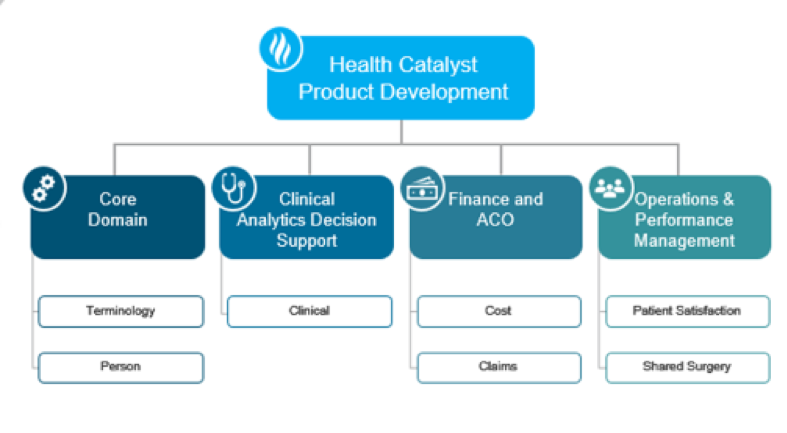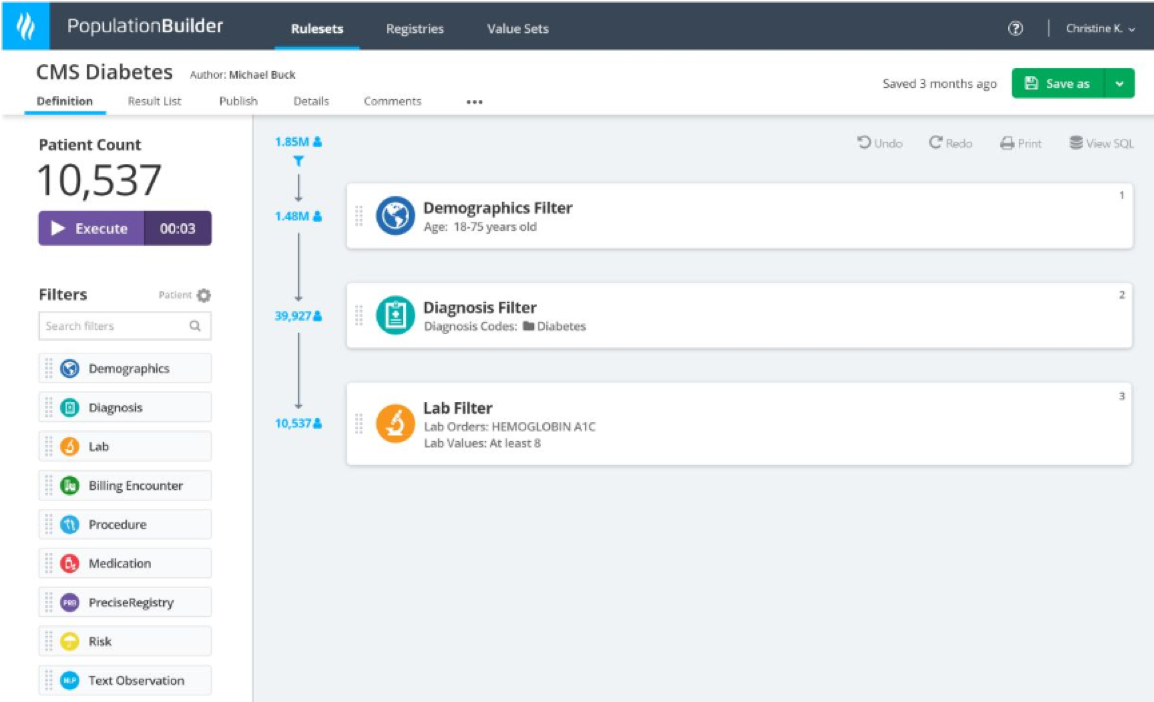Health systems feel mounting pressure to demonstrate ROI from analytics investments but are faced with inefficacies and delays. Fortunately, the Self-Service Analytics Solution delivers a 10x increase in analytics productivity and a 90 percent decrease in the time required to develop new analytic insights.
The Self-Service Analytics Solution solves these tough analytics problems through two primary elements: curated, modular data kits called DOS Marts; and Population Builder, a powerful self-service tools that lets any time of user, from physician executive to frontline nurse, explore data and quality build cohorts of patients without relying on IT staff and with no need for sophisticated and customized SQL and data science coding.
 Download
Download

Healthcare IT departments feel mounting pressure to demonstrate ROI on their analytics investments yet struggle to do so due to overwhelmed analytics teams and delays in reporting work. To solve this dilemma, Health Catalyst created the Self-Service Analytics Solution. The data content and software suite maximizes value from healthcare data by providing agility, speed, and consistency to analytics teams and data scientists. Early client deployment sites using the Self-Service Analytics Solution report a 10x increase in analytics productivity and a 90 percent decrease in the time required to develop new analytic insights.
The Self-Service Analytics Solution consists of two primary elements: curated, modular data kits called DOS Marts; and Population Builder, a powerful self-service tool that lets any type of user, from physician executive to frontline nurse, explore their data and quickly build cohorts of patients without relying on IT staff and with no need for sophisticated and customized SQL and data science coding.
DOS Marts integrate multiple data sources, harmonize the terminology, and make the most common data elements easy to use, facilitating the rapid development of analytic reports and applications. Built on the Health Catalyst Data Operating System (DOS™), DOS Marts provide a curated, reusable, customizable, layer of data, content, logic, and algorithms. They are designed to address many analytic scenarios, while encouraging governance and the efficient reuse of logic for consistent analytics. DOS Marts also provide standardized vocabulary mappings to key data elements and incorporate over 400 clinical definitions from nationally standardized data sources such as CMS.

Population Builder is a powerful, elegant designed tool that simplifies exploration of the DOS Marts and dramatically boosts analysts’ productivity. It is specifically designed to support the precise definition of patient cohorts. It is also designed to enable the publication, governance and reuse of national and local definitions for patient cohorts. Health Catalyst built this tool to enable clinicians, researchers, data analysts, and data scientists to use Population Builder in a real-time, collaborative work setting, exploring different definitions for patient cohorts, then saving that work for downstream analytics.

Healthcare organizations struggle constantly to accelerate time-to-value for their analytics investments and improve analytics throughput. To address lengthy delays in getting results from analysts, the Self-Service Analytics Solution enables the reuse of analytics building blocks such as value sets and populations, so analysts no longer need to reinvent the wheel for each analytics task. By standardizing elements of lower level reporting work and accelerating the collaboration process between analyst and stakeholder, organizations can achieve quicker time to value.
Additionally, analytics teams are often overwhelmed with simple and repetitive analytics requests. The inability to capture and reuse knowledge leads to inconsistent analytics results; asking two different analysts the same question yields different results. Constrained by a need for SQL expertise to gain data insights, organizations are unable to avoid an analytics bottleneck. The Self-Service Analytics Solution enables standardization and reuse of analytics assets, while unleashing the data beyond the SQL experts to provide stakeholders with a self-service option, easing the burden on analyst teams and allowing analysts to operate at the top of their license.
Finally, the Self-Service Analytics Solution helps healthcare organizations improve their return on analytics investments. Due to significant lost productivity from managing overwhelming backlogs and reinventing basic analytics building blocks, many organizations struggle to generate a return from their analytics investments. By using the Self-Service Analytics Solution to free up valuable analyst time and shift stakeholders toward self-service, organizations can be more effective in improving outcomes and scaling analytics capabilities.
Would you like to learn more about this topic? Here is an article we suggest:
Integrated Healthcare Data Quickly Enables Adaptive, Purpose Driven Analytics